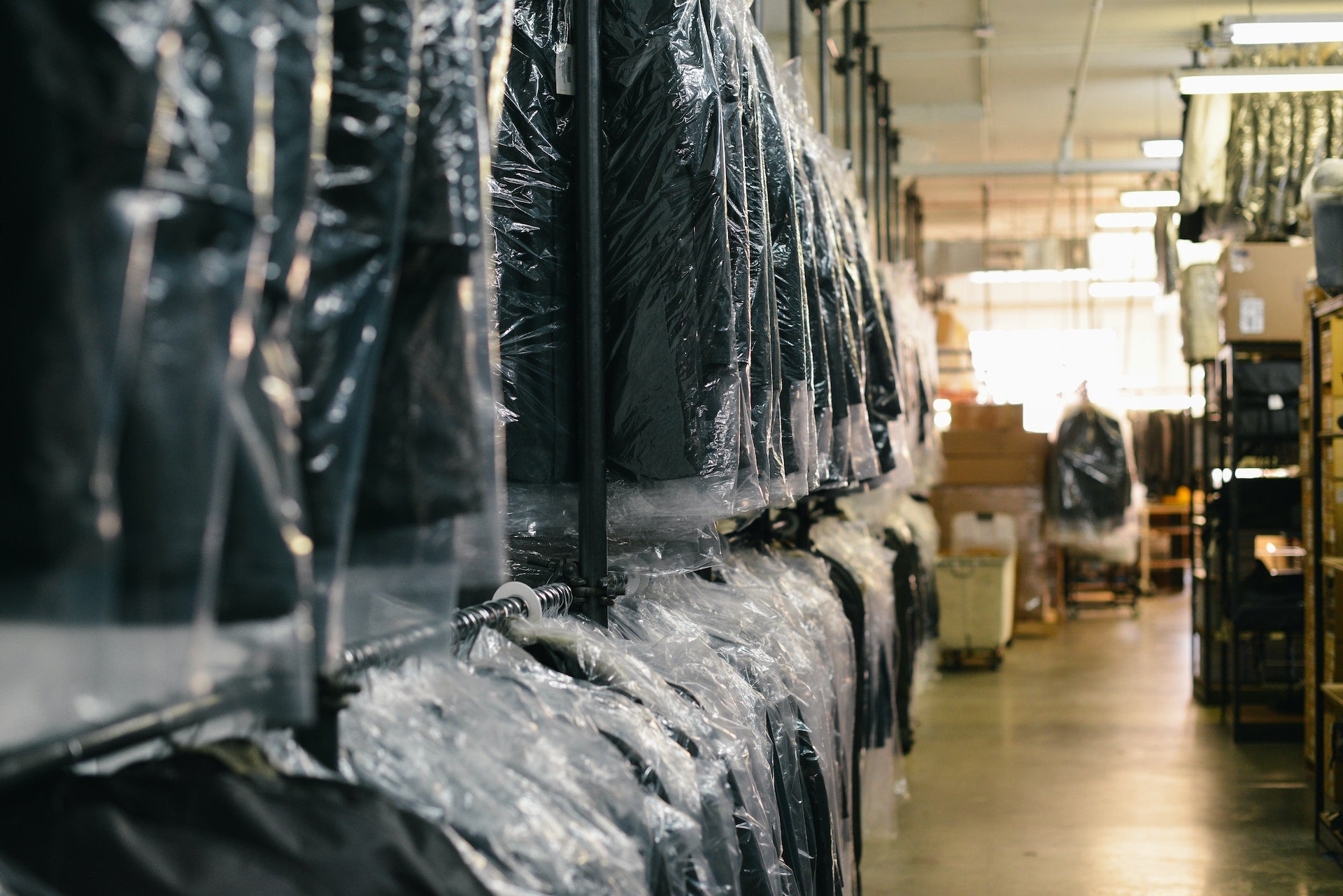
Does Dry Cleaning Remove Stains?
Yes, dry cleaning can remove most stains from most garments but there are no guarantees. Stain treatments depend on the type of stain, the type of fabric, and how long the stain has been there.
Let’s find out what dry cleaning service providers consider when they take your job order. What if you received your garments only to find new stains? We'll also explain what may have caused any new stains that may not have been there before dry cleaning.
How Does Dry Cleaning Remove Stains?

Professional dry cleaners use special solvents that treat stains without damaging the fabric. The process involves a dry cleaning machine that doesn’t use water. Instead, it uses the solvent to lift dirt and dissolves oils and grease. It may solve most stains that regular wash can’t handle.
Kinds of Stains Accepted at the Dry Cleaners
Dry cleaning can be used to remove a wide variety of stains, including:
Do not attempt to clean “dry clean only” garments that are oil stained. Household cleaners will only ruin your favorite velvet or silk dress.
You may do more harm than good on oil or oil-based sources like petroleum jelly, lotion, and hair care products. Instead, head on to the dry cleaners to have them professionally cleaned.
Food stains like ketchup, mustard, and chocolate can soil clothes. Wine and coffee stains can also do some damage. You can treat them at home with the right cleaners and if you act fast enough.
It’s a different conversation if the stains set on your tuxedo, your satin garments, or any of your expensive clothes. You’ll be spending less by having it professionally cleaned now rather than sending it later after you’ve done home remedies.
You can get dye stains when you do a home remedy such as applying alcohol on ink stains. When this happens, you’ll have a stain and irreversible damage to your fabric. Better send it to the dry cleaners instead.
For paint accidents on special garments, scrape that paint off using a spoon or the back of a knife. Then take it to the dry cleaners as soon as possible.
Pet stains like urine may look manageable at first. That’s until it sets on the fabric and acids from the urine damage it.
Smoke stains can be in the form of yellow nicotine with some black residues on your garment fabric. It may also leave a hard-to-remove strong odor. It may be due to the nicotine and its vapors mixing with your sweat stains and skincare products.
What Types of Stains Can’t Be Removed Through Dry Cleaning?

While dry cleaning can works its magic on most stains on delicate items in your wardrobe, it has some limitations. It is not always the best option for any and all types of fabric. It also can’t remove all types of stains.
Here are some types of stains that the dry cleaners may not completely solve:
There are several reasons why a stain can set or it has deeply bonded with the fabric. You might have stored it for a while before sending it to the dry cleaners. You might also have accidentally done incorrect first-aid solutions like heavily wiping off the dirt from the fabric. Tell your dry cleaners how long it has been since the fabric was smeared.
When we do home remedies on “dry clean only” garments, there’s a high chance the cleaning solution you use may discolor your fabric. You will need to let your dry cleaners know what chemicals or solutions you used at home to help them understand how to treat the spots.
Sometimes, a single stain can come from different sources. It can be a combination of your sweat, skincare product, and other liquids that may come in contact with your delicate garments. It’s important to let your dry cleaners know about how you got the stain in the first place.
Garments that come in contact with heat may permanently set the stain on any fabric. Do not iron stained fabrics or do not attempt to put it in the dryer.
Limitations of Dry Cleaning and Conditions That Make It Difficult to Remove Stains

Dry cleaners can do a lot but they may not completely solve the problems. There are a few situations and conditions that can impede the stain removal process:
Before heading out to the professional, know what type of stain they will be dealing with and if it’s a mixture of spills or dirt. This will help them choose the right treatment.
Treating spots as soon as possible is one of the best route to make sure any issues on your garments can be removed easily.
Some fabrics like wool are more difficult to treat than others. Make sure to approach a reputable dry cleaner because not all professional services are created equal. Dry cleaning cannot treat stains on leather and suede.
Some dry cleaning solvents are more effective at removing certain types of stains than others. Here is where it’s helpful to let the spotter know what kind of stain they’re going to treat.
What to Do When Dry Cleaning Fails?

If you’ve been to the dry cleaners and they couldn’t solve the issue, chances are, you can’t too.
Spotters are highly skilled individuals in dry cleaning companies who tackle stains every day. They ask questions like:
- How long the stain has been there
- What liquid was spilled on it
- How it was initially cleaned
Your answers to these questions will help them understand the problem and what chemicals or solutions can they use to clean it.
A spotter usually uses a milder chemical and builds up to a stronger one, depending on how the stain and the fabric reacts. When cleaning wasn’t done as soon as possible, the discoloration may occur and the fabric may have irreversible damage. Even if the spotter is able to spot treat, the discoloration or chemical changes before dry cleaning may remain.
Have you ever given a delicate dress to a dry cleaner without stains and it came back to you stained? It might not be entirely the dry cleaner’s fault.
There are invisible stains that might have happened before you brought it to the dry cleaners but it only became visible after some time or after heat was applied to it. For example, fruit extracts like the juice from your apple can cause a chemical reaction with the dress if you weren’t aware about it when it happened.
The next time your clothes are stained and you can act quickly, you can try using a mild, enzymatic stain remover. These types of spot treatments are strong enough to handle stains without damaging the fabric.
Frequently Asked Questions (FAQs)

Yes, dry cleaning is very effective at removing oil stains. The solvent used in dry cleaning dissolves the oil, making it easy to remove.
Yes, it can remove sweat stains. However, it’s important to note that they can contain bacteria, which can cause the problem to set and become more difficult to remove especially if it’s deep seated or it’s mixed with other causes.
Yes, the professional process can can remove armpit stains. However, armpit stains can contain bacteria. Just like sweat stains, it may be more difficult to remove if it’s deep seated or it has been mixed with other causes.
Yes, dry cleaning can remove coffee stains but these can contain acids, which can damage the fabric. It’s best to bring tannin stains like this immediately to the dry cleaners.
Yes, professional dry cleaners can remove blood stains but it contains proteins that may heavily bind with the fabric. It maybe more difficult to spot treat than most stains.
Key Takeaways
- Dry cleaning can remove most stains from most garments, but there are no guarantees.
- The type of stain, the type of fabric, and how long the it has been there all affect how well dry cleaning can remove it.
- Some issues, such as set-in stains or stains caused by harsh chemicals, may be too difficult for spotters to remove.
- Some fabrics, such as leather and suede, cannot be dry cleaned.
- If you have stained delicate items, it is best to take it to a reputable dry cleaner as soon as possible.


























